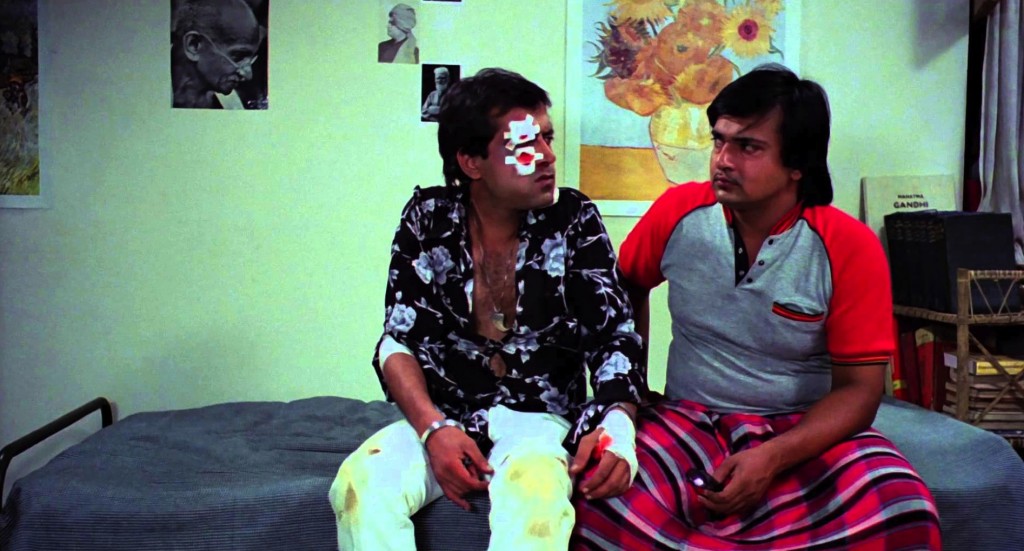Two womanizing slackers, Omi (Rakesh Bedi) and Jai (Ravi Baswani), from Delhi University attempt to woo the new girl in the neighbourhood, Neha (Deepti Naval) but fail miserably and are even humiliated. Their third room-mate, shy, and studious, Siddharth (Farooq Sheikh), however succeeds, much to their chargin. The two then do all they can to split the two lovebirds, so that their secrets and humiliation are not revealed. Of course all’s well that ends well finally!
The most unfortunate indicator of the mediocre movie times we live in is the fact that the year of production and the director’s name has to be attached to a film like Chashme Buddoor, in order to avoid confusion.
Sai Paranjpye’s Chashme Buddoor (1981) is, first and foremost, a delightful reminder of how the Hindi-film comedy genre has deteriorated exponentially over the last few decades. While it could be argued that the film was ahead of its time as far as contemporary buddy flicks go, it is ironical that most ‘comedy entertainers’ nowadays are behind the turn of the 17th century.
Digitally restored (with great care and initiative) by Reliance Mediaworks, the rib-tickling account of the 3 chain-smoking Delhi University students is so relevant and well-acted even in 2013 that it is difficult to do away with a constant smirk through the screening. It is hard not to empathize with the ever-since Farooq Sheikh as the shy, studious roommate stuck amidst a rioting cloud of buffoonery headed by harmless womanizers Bedi and Baswani – who’d, incidentally, be lynched, hunted down and jailed by media channels if they were to use those same methods of eve-teasing today. Troubled times call for sensitive measures, but back in 1981, the two fools still found a way to make such acts look extremely funny and innocent.
The lyrics by Indu Jain, combined with the tunes of Rajkamal, are fascinating for its sheer ability to blend into the storytelling of the film, especially the adorable Kaise Ho Paagal lampoon of love and poetic Kahan Se Aaya Badra, where the gorgeous Deepti Naval displays more poignancy and poise with her glassy eyes than recent superstar actresses do in their entire careers. Her famous Chamko powder pitch stands out, even today, as one of the most magnificently-acted slow-burning comic moments ever captured on screen. Sheikh comes into his own at that moment as the shy and nervous ‘inexperienced’ boy, and never turns back.
What is most remarkable about the film is that Paranjpye had found a way to gently spoof our own cinema/culture in the most gracious and effective way, 32 years ago – right from flowers kissing, to singing songs of love in parks, to smooth-talking alpha male heroes like angry young Bachchan. Somewhere, along the line, this refined subtle way of humour was lost (and butchered) in translation, item numbers, dizzy locations, remakes, loud background scores, Sajid Khans and David Dhawans. Farah Khan may have come closest to recreating the genre with the quirky Main Hoon Na a decade ago. For now, though, let us celebrate this bygone era through the smartest film of a generation – a combination of simple basic techniques of filmmaking and writing so effective that you wonder if it is ever going to be possible to watch another vulgar Delhi-based attempt at contemporary humour again.
Hindi, Comedy, Color
https://www.youtube.com/watch?v=897VQESVQCw


